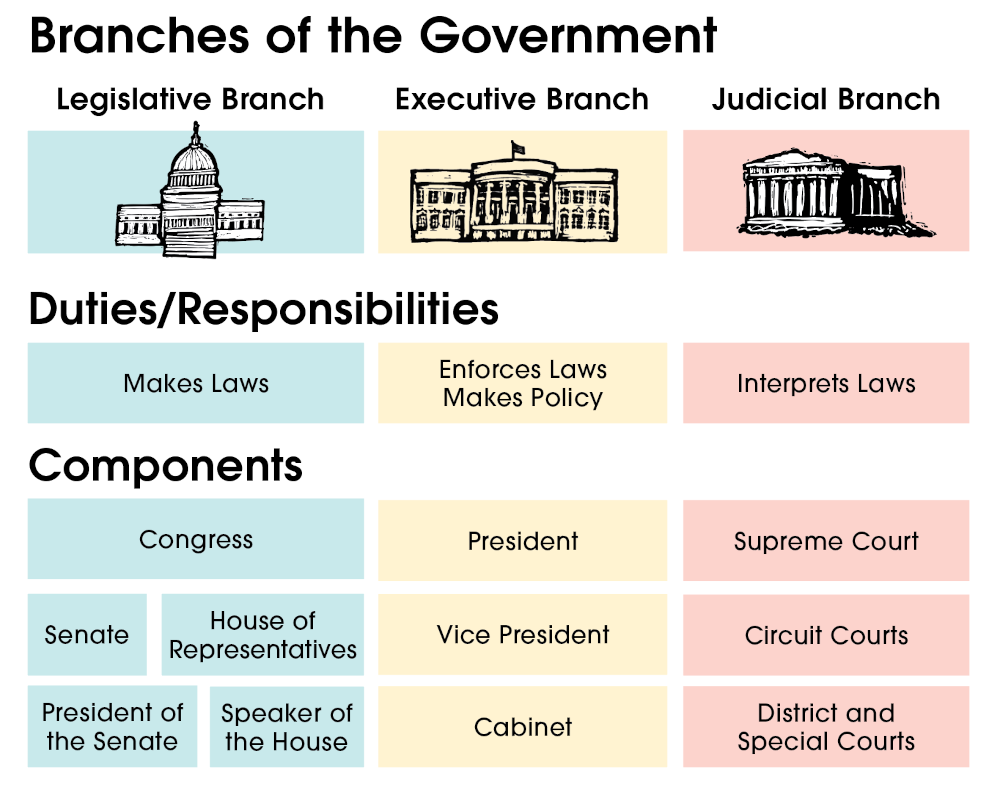WOC 581
Page 581
Government
Every country in the world has a government. The purpose of the government is to make and enforce laws and to protect the rights of its citizens. Every major country in the world also has a constitution, a basic set of laws by which the people are governed.
The U.S. Constitution establishes the form of the United States government and explains the rights and responsibilities of its citizens. This section takes a closer look at those rights and responsibilities, and how the government is organized.

WOC 582
Page 582
The U.S. Constitution
The Constitution is made up of three main parts: a preamble, 7 articles, and 27 amendments. The preamble states the purpose of the Constitution, the articles explain how the government works, and the 10 original amendments list the basic rights guaranteed to all American citizens. Together, these parts contain the laws and guidelines necessary to set up and run a successful national government.
Besides giving power to the national government, the U.S. Constitution gives some power to the states and some to the people. Remember this when you study the Constitution.
The Preamble
We the people of the United States, in order to form a more perfect Union, establish justice, insure domestic tranquility, provide for the common defense, promote the general welfare, and secure the blessings of liberty to ourselves and our posterity, do ordain and establish this Constitution for the United States of America.
The Articles of the Constitution
The articles of the Constitution explain how each branch of government works and what each can and cannot do. The articles also explain how the federal and state governments must work together, and how the Constitution can be amended or changed.
Article 1 explains the legislative branch, how laws are made, and how Congress works.
Article 2 explains the executive branch, the offices of the president and vice president, and the powers of the executive branch.
Article 3 explains the judicial branch, the Supreme Court and other courts, and warns people about trying to overthrow the government.
Article 4 describes how the United States federal government and the individual state governments work together.
Article 5 tells how the Constitution can be amended, or changed.
Article 6 states that the United States federal government and the Constitution are the law of the land.
Article 7 outlines how the Constitution must be adopted to become official.
WOC 583
Page 583
The Bill of Rights
To get the necessary votes to approve the Constitution, a number of changes (amendments) had to be made. These 10 original amendments are called the Bill of Rights. They guarantee all Americans some very basic rights, including the right to worship and speak freely and the right to have a jury trial.
